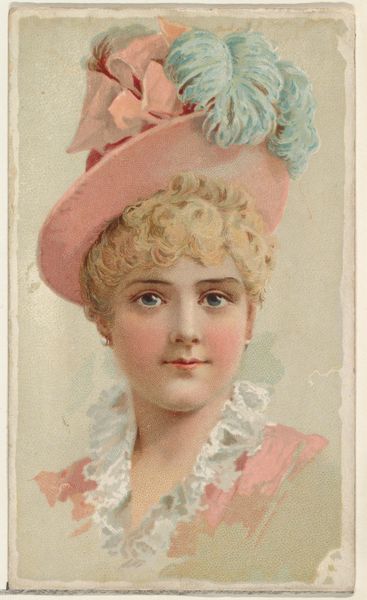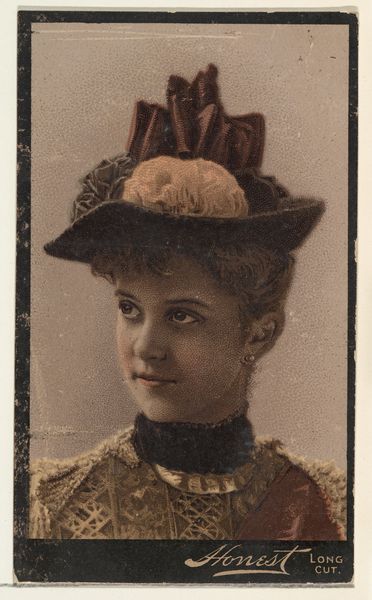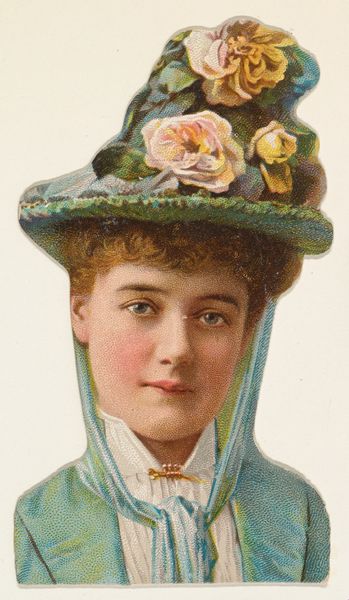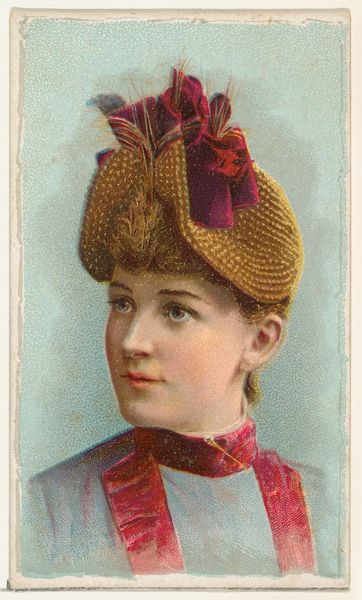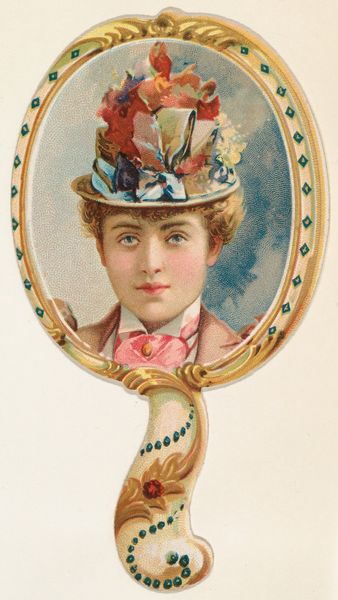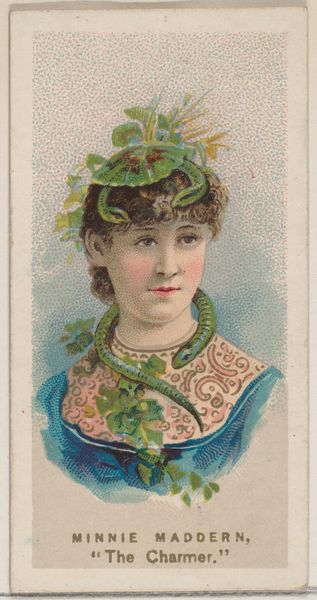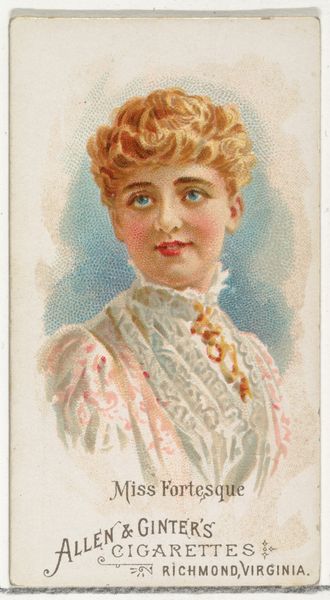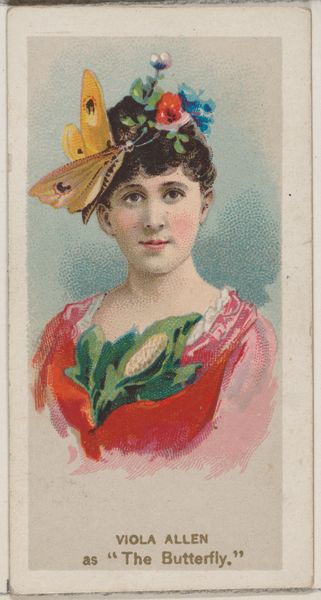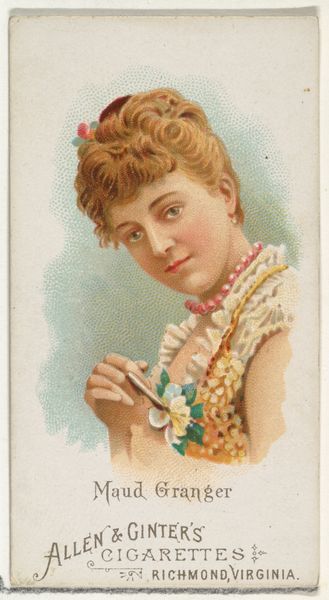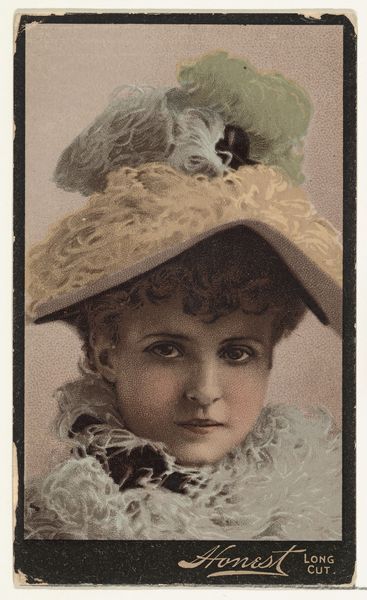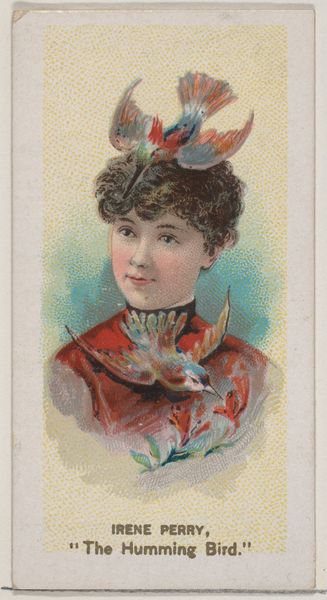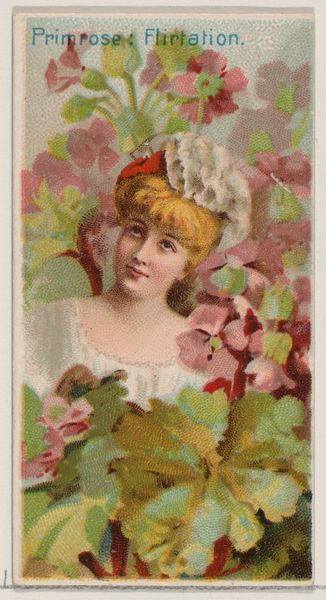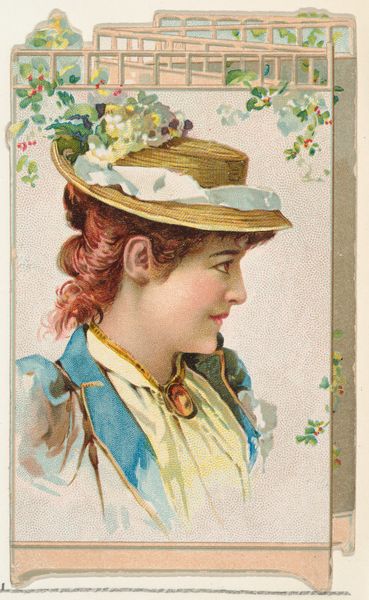
Actress wearing hat with yellow blossoms, from Stars of the Stage, First Series (N129) issued by W. Duke, Sons & Co. to promote Honest Long Cut Tobacco 1890
0:00
0:00
#
portrait
# print
Dimensions: Sheet: 4 3/16 × 2 1/2 in. (10.6 × 6.4 cm)
Copyright: Public Domain
Editor: So this is "Actress wearing hat with yellow blossoms" from 1890, a promotional print by W. Duke, Sons & Co. The actress's face is so delicately rendered; it seems like a photographic portrait, but also like a drawing. What's your take on how it plays with notions of representation? Curator: I think you're spot on. This image is fascinating when we consider the labor involved. This wasn't just art for art's sake. These were mass-produced items meant to sell tobacco. The image romanticizes femininity for consumption; an actress adorned in a manufactured scene promoting 'honest' tobacco, a direct commentary on industrialism and advertising's burgeoning impact. The blossoms, perhaps, a coded nod towards 'natural' flavours versus the actual manufacturing process. Do you see how the Japonisme art movement comes into play in this print, and the industrial consumption that it fed? Editor: I do! The flowers are a nod to Japanese prints, but their purpose is so radically different, like you said, fueling mass consumerism. So is the beauty almost deceptive because it is inherently tied to production? Curator: Exactly. The delicate aesthetic obscures the hard realities of mass production and the promotion of addictive substances. The means justify the ends. It's important to question where that line is drawn when we talk about craft and mass manufacturing. Editor: I see what you mean. It changes my initial read, knowing its origins in industry, but also consumption. Curator: Absolutely! Now consider where these small prints ended up... collected, traded. How do those exchanges shift our view? Editor: I hadn’t considered how the purpose shifts. Thank you.
Comments
No comments
Be the first to comment and join the conversation on the ultimate creative platform.
